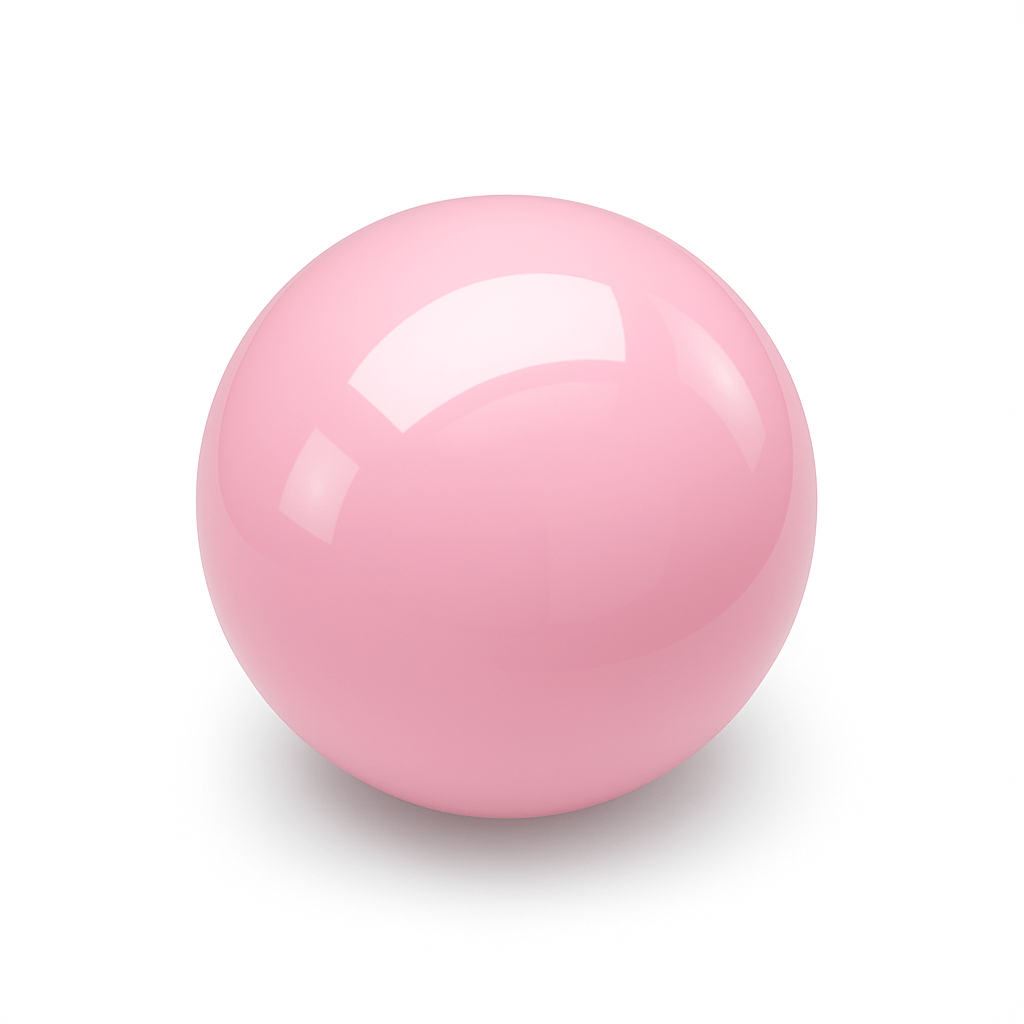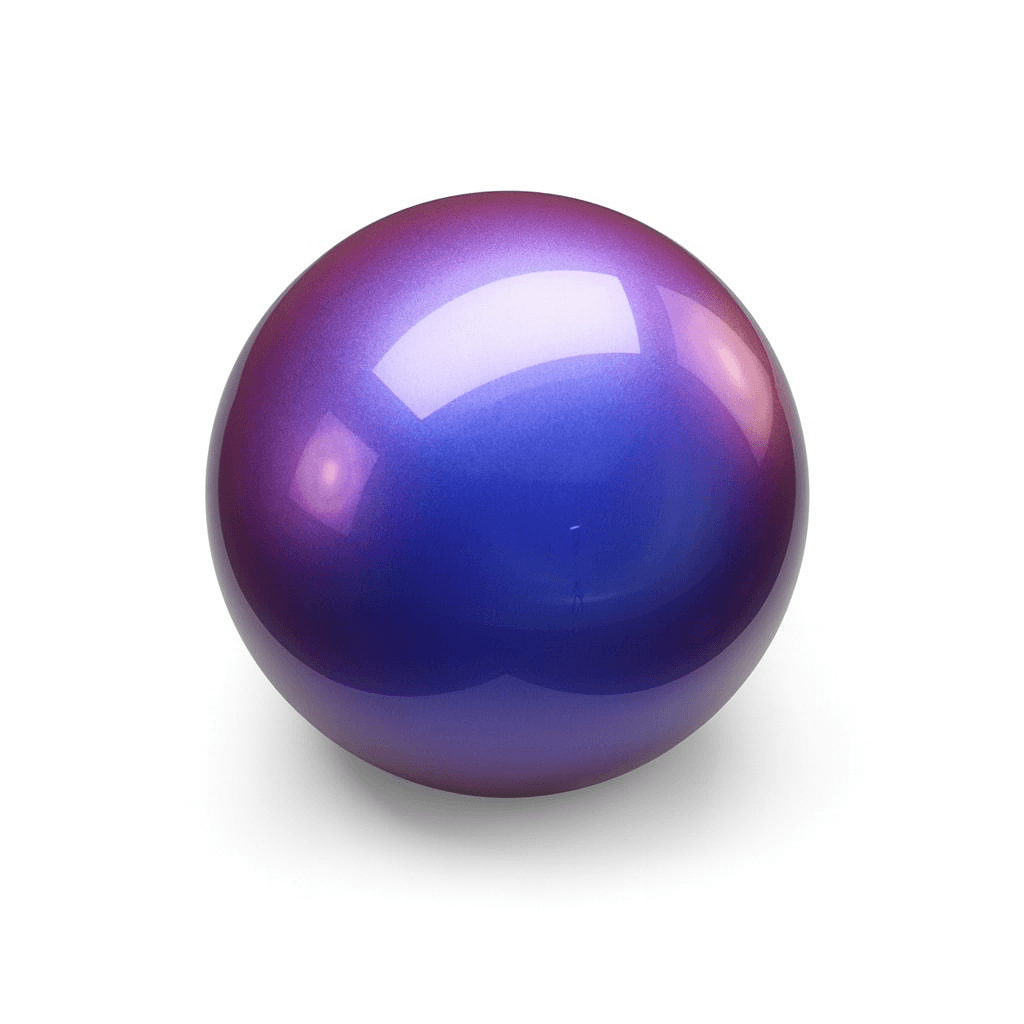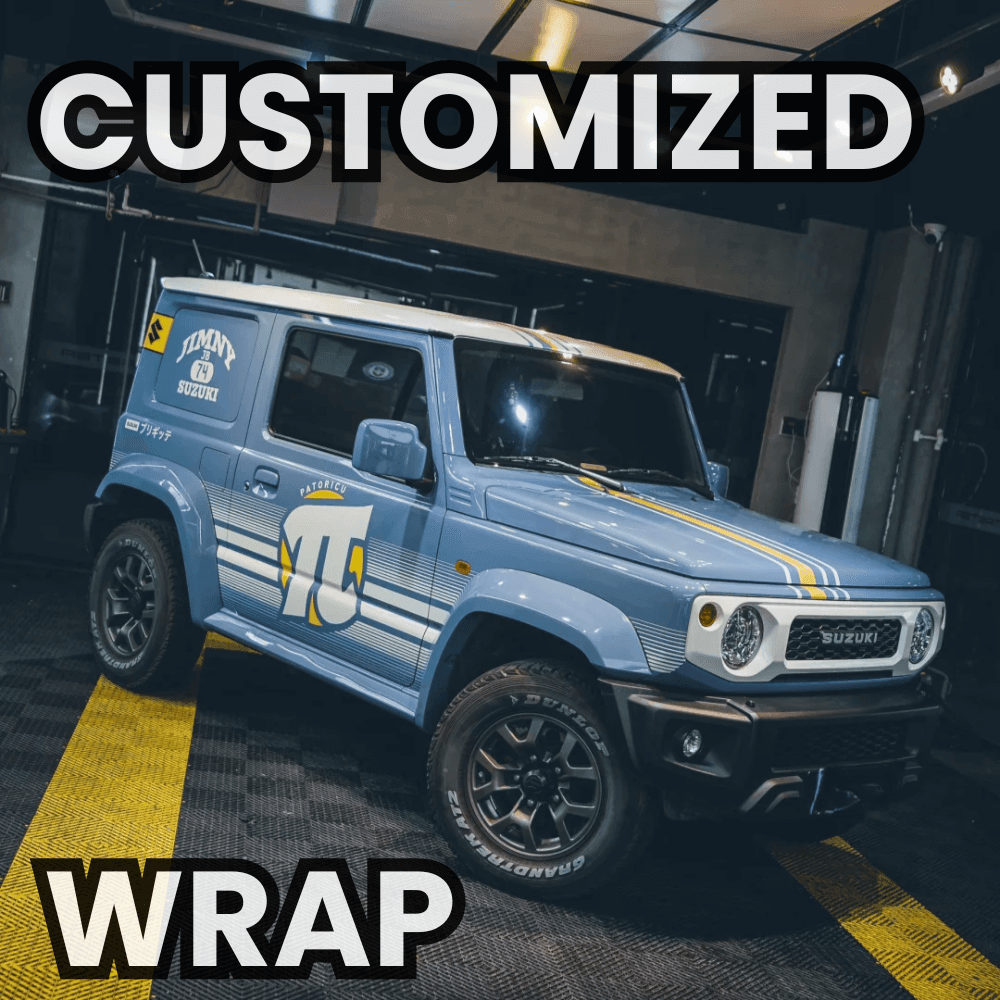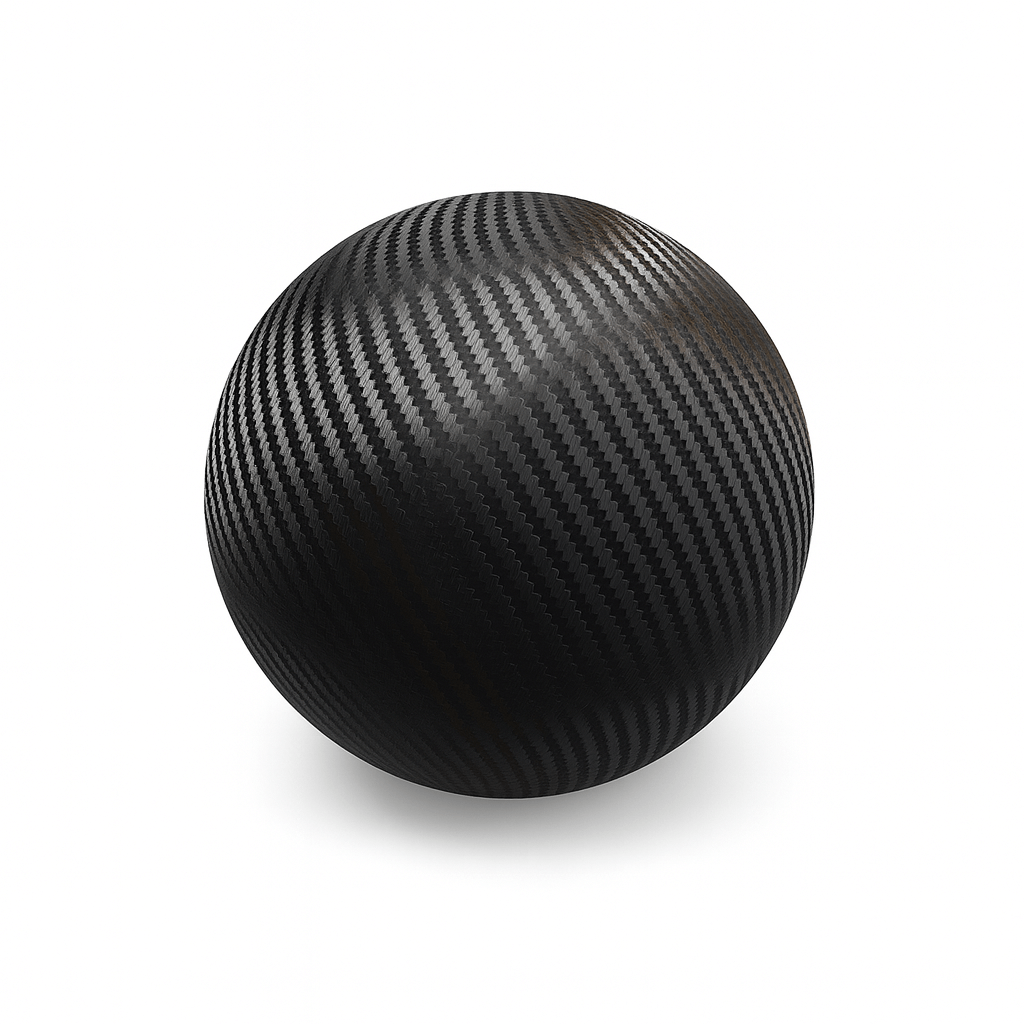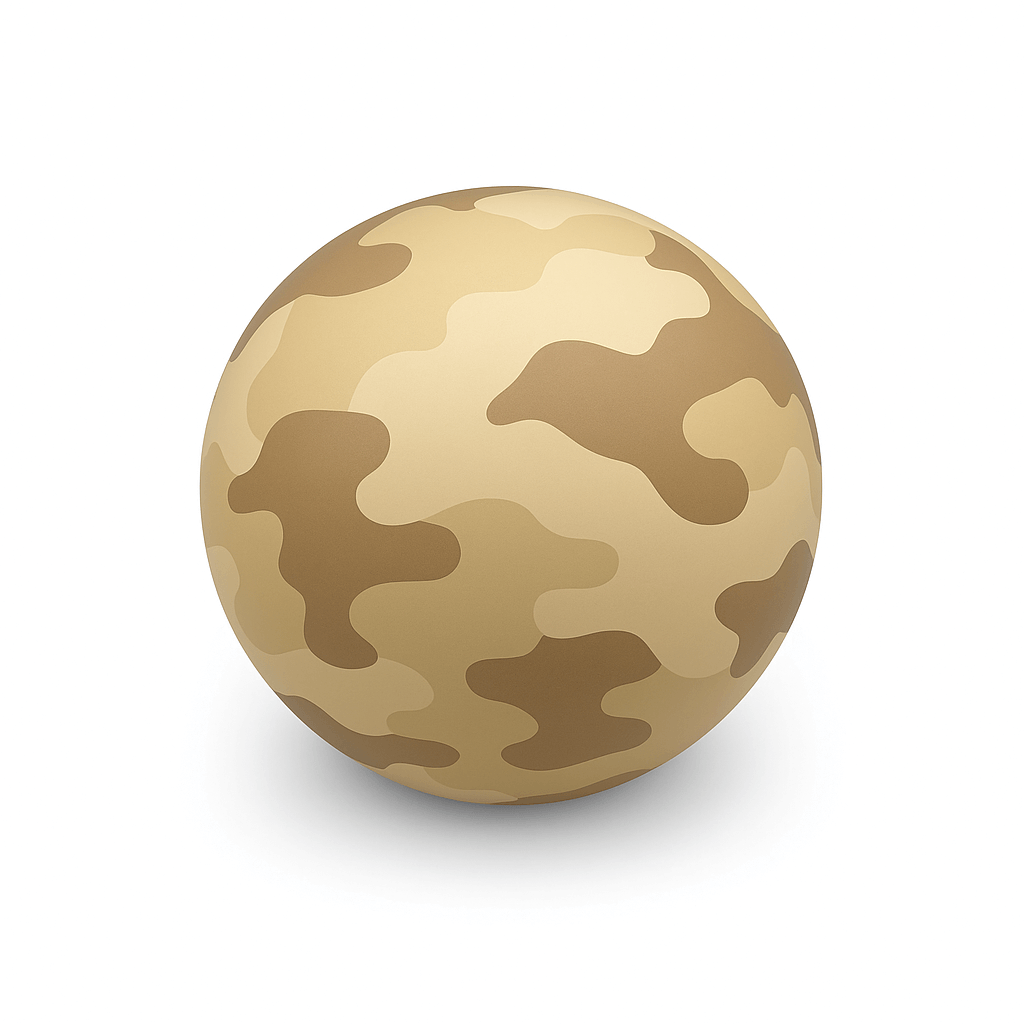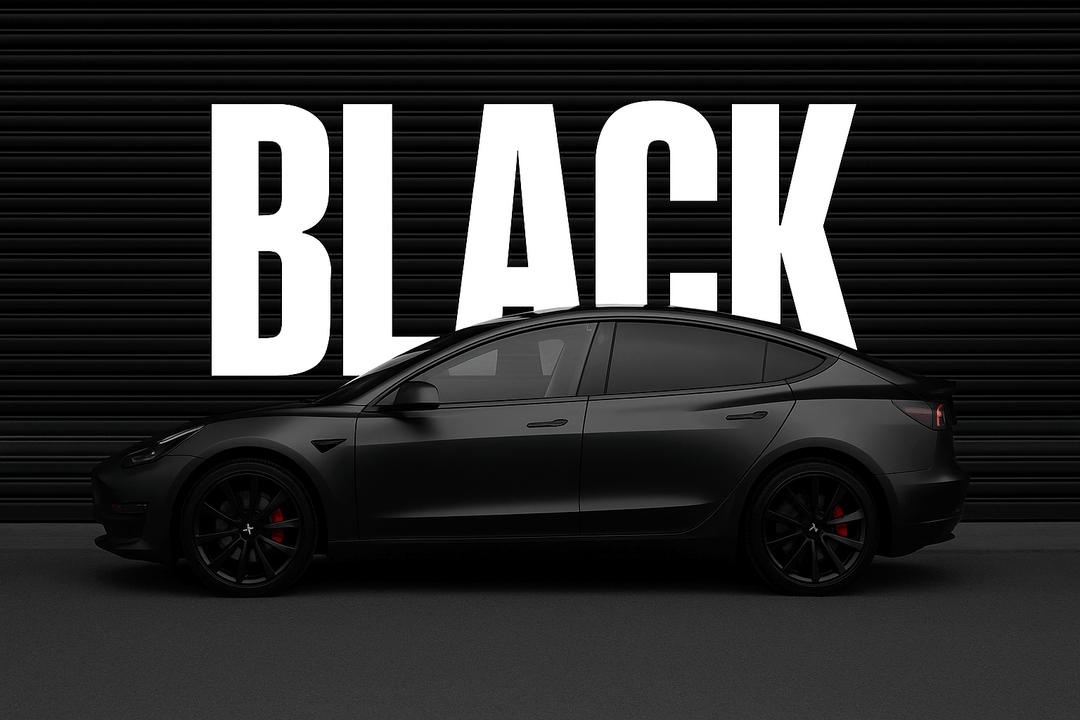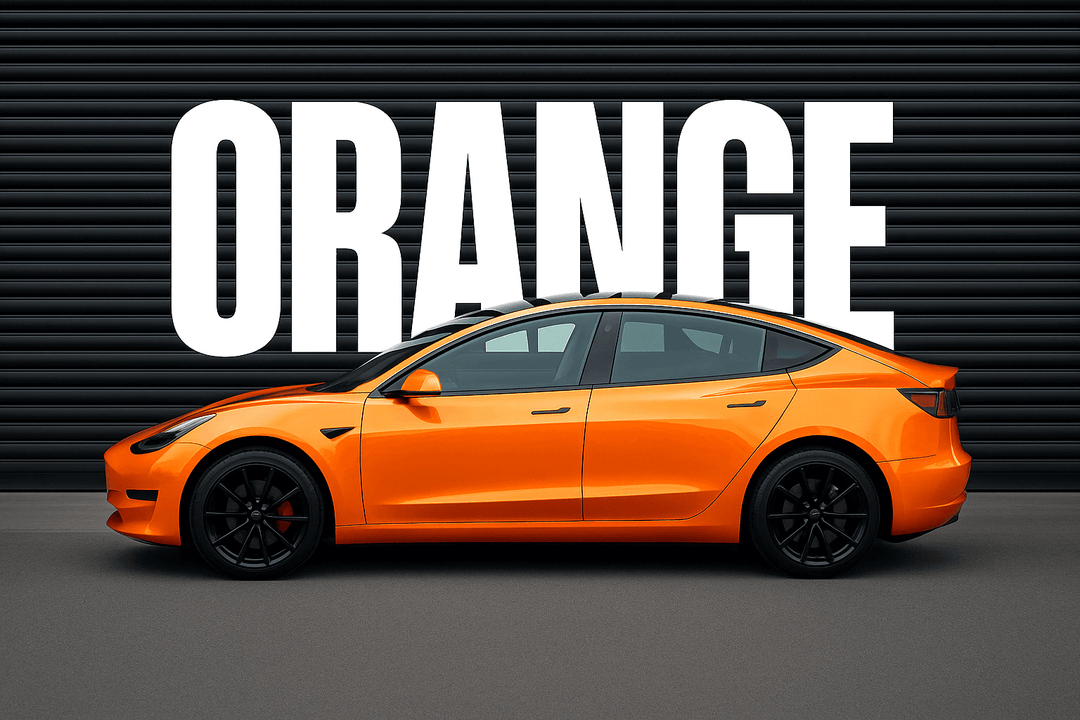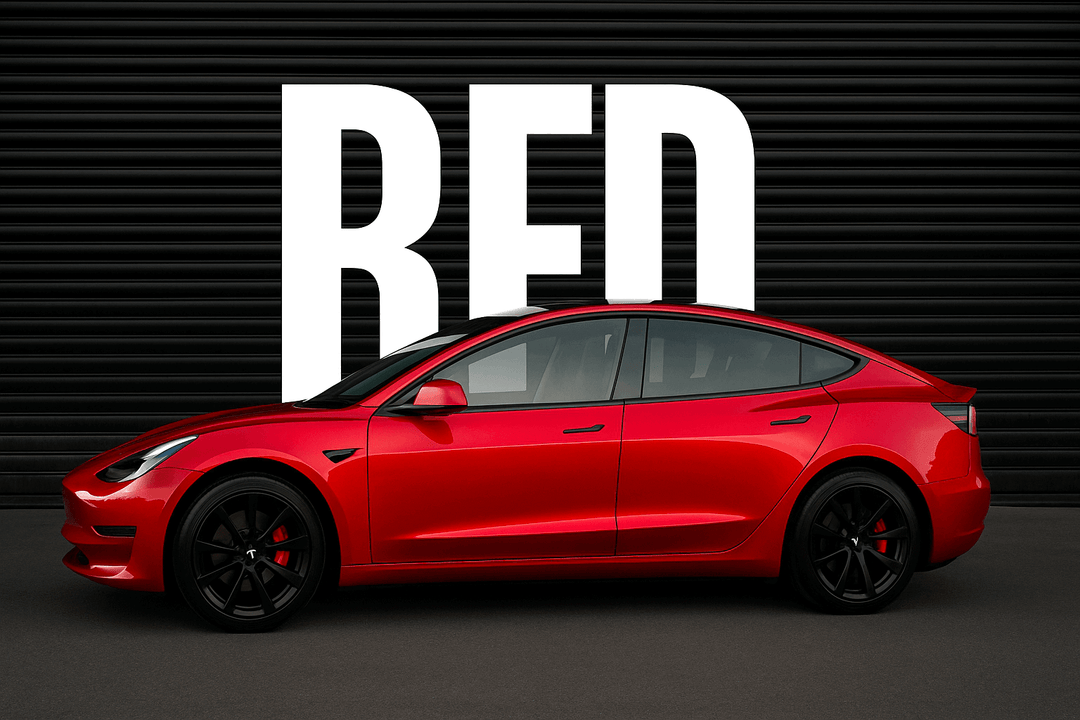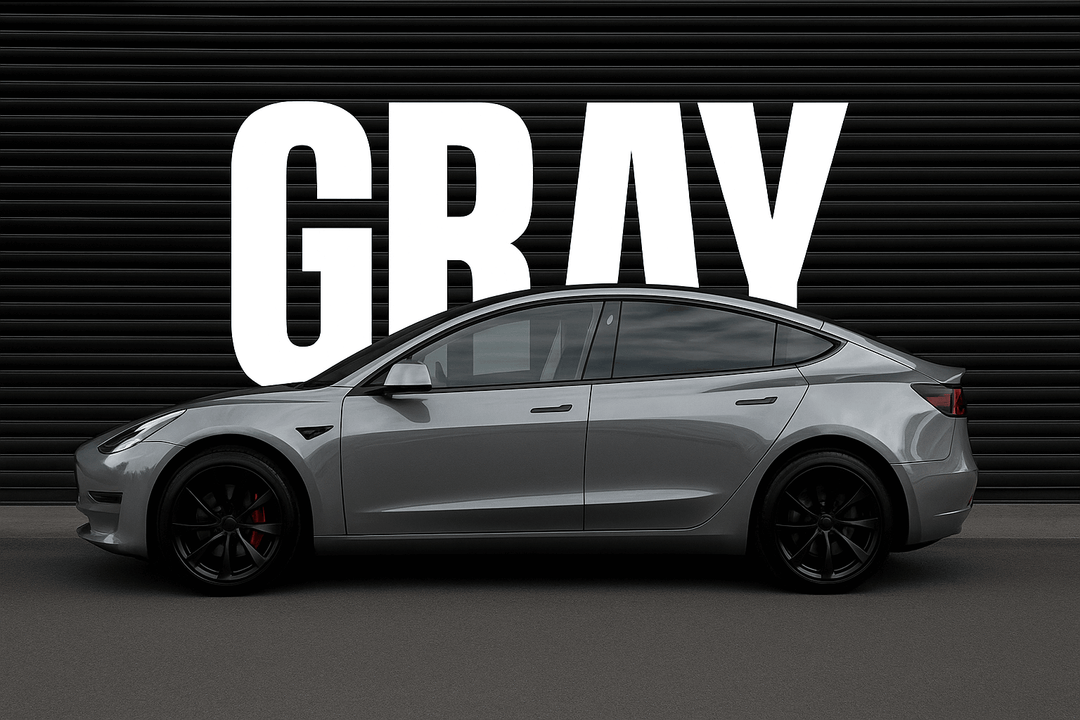How Hard is it to Vinyl Wrap a Car Yourself
So, you're thinking about giving your car a fresh new look with a vinyl wrap, but here comes the big question: Should you hire a professional or do it yourself?
Vinyl wraps are a favorite among DIY car enthusiasts for good reason. They offer the chance to transform your car’s appearance while protecting the original paint underneath. Plus, something is rewarding about taking on a project and making it your own. But let’s be honest, vinyl wrapping isn’t as simple as peeling and sticking a fancy sheet onto your car.
From surface preparation and precision cutting to heat stretching and bubble smoothing, wrapping a car involves multiple steps and a steady hand. In this guide, we’ll break down how difficult it is to vinyl wrap a car yourself, what factors affect the complexity, and whether the DIY route is right for you.
Is It Hard to Wrap a Car Yourself?
Wrapping a car by yourself can be rewarding, but it isn’t as easy as it looks. While it’s possible for a beginner to achieve decent results, the process demands time, precision, and the right environment. Let’s break it down into key factors that influence how difficult the task really is.
A. Your Skill Level
Your experience with DIY projects plays a big role. If you’ve worked with decals, tint films, or any auto detailing before, you’ll have an advantage. Vinyl wrapping requires hand-eye coordination, patience, and a steady grip, especially when dealing with large sheets and curved surfaces. If you’re not familiar with heat stretching or precision cutting, be prepared for a learning curve.
B. Tools & Workspace
Vinyl wrapping requires a specific set of tools. The essentials include:
-
Heat gun
-
Squeegee or scraper
-
Precision cutting blades
-
Surface cleaner and microfiber cloth
-
Masking tape and measuring tape
-
Gloves and small magnets
These tools are easy to find but come with added costs. You’ll also need a clean, well-lit indoor workspace free of dust and direct sunlight. The right environment helps prevent bubbles, wrinkles, and debris from ruining your work.
C. Planning and Measuring
This is where many beginners go wrong. You can’t eyeball it—you must measure each panel accurately. Planning ensures you don’t waste vinyl or run short mid-project. Professionals recommend buying 2–3 meters more than your estimated requirement to account for mistakes or tough angles. Mistakes here can result in mismatched seams or wasted material, making your wrap look messy and unprofessional.
D. Car Surface Complexity
The difficulty also depends on your vehicle’s shape. Wrapping a car with flat panels is far easier than dealing with curves, edges, and intricate trim. Parts like door handles, bumpers, side mirrors, and fenders are especially tricky. Many of these components are easier to wrap when removed, which means you need to know how to safely disassemble and reassemble them. If not, you risk damaging your car or the vinyl.
E. Clean, Dry, and Smooth Surface
Surface preparation is crucial. Before applying any vinyl, inspect the car thoroughly for:
-
Dents or dings
-
Rust spots
-
Paint chips or peeling paint
-
Wax or oil residue
-
Dust and debris in fenders and trims
Any imperfection underneath the wrap will show through and can cause air pockets or peeling. Always wash your car, use isopropyl alcohol to remove residues, and ensure the surface is completely dry. Even small traces of moisture or wax can ruin adhesion. If necessary, visit a body shop to fix dents and paint issues before wrapping.
F. Time Commitment
Wrapping a car isn’t a one-hour job. For a beginner, a full wrap can take 2 to 3 days or more. You’ll need time for prep, measurements, application, heat-sealing, trimming, and finishing touches. Add extra hours for learning from mistakes. If you're wrapping the car over a weekend, expect to work long days, and you may still need more time to complete it right.
Also, wrapping different vinyl materials takes different techniques. Some are more stretchable; others are more rigid. Understanding these differences ahead of time helps reduce frustration during the installation.
Common Challenges When Wrapping a Car
Vinyl wrapping might look like a straightforward process, but once you dive in, you'll quickly realize there are several common challenges that can make or break your DIY project. Vinyl is a sensitive and stretchable material that reacts to temperature, surface quality, and handling. Even the smallest mistake can lead to visible imperfections. Let’s explore the most common hurdles you may face when wrapping a car yourself.
1. Peeling Paint, Rust, and Deep Scratches
One of the biggest issues comes from underlying surface damage. If your car has peeling paint, rust patches, or deep scratches, these areas will not hold the vinyl properly. The wrap may bubble, lift, or even tear over time. Worse, imperfections underneath will show through the vinyl, ruining the sleek finish you’re aiming for.
Tip: Always inspect your vehicle beforehand. Get any paint or rust damage fixed at a body shop. A smooth surface ensures proper adhesion and a clean result.
2. Air Bubbles and Dirt Contamination
Even a speck of dirt or a drop of moisture can cause major problems during installation. Vinyl sticks best to a completely clean and dry surface. If you skip the prep or use the wrong tools, air bubbles can form under the vinyl, making it look bumpy and uneven.
Tip: Clean the car thoroughly with isopropyl alcohol and dry it completely. Use a clay bar if needed to remove embedded contaminants. Work in a dust-free indoor space and apply even pressure with a felt-edge squeegee to eliminate bubbles as you go.
3. Temperature Sensitivity
Vinyl behaves differently depending on the temperature. Too cold, and the film becomes stiff and brittle. Too hot, and it gets overly stretchy and hard to control. Either extreme makes handling difficult and can cause the vinyl to tear or warp.
Tip: Aim to work in a temperature-controlled environment between 60°F to 75°F (15°C to 24°C). Avoid working in direct sunlight or freezing garages.
4. Complex Curves, Contours, and Edges
Cars are rarely made up of flat surfaces. From sharp body lines to rounded bumpers and tight crevices around mirrors or lights, these complex areas are challenging. Stretching vinyl around them without wrinkles or distortion takes practice and patience. Misjudging the material’s stretch can lead to overstretched spots or tears.
Tip: Tackle flat panels first. Use heat carefully to stretch vinyl around curves. For complex parts like mirrors or door handles, consider removing them before wrapping for a cleaner result.
5. Misalignment and Wasted Vinyl
Vinyl wrap is not forgiving when it comes to alignment. If you misplace a piece or cut too short, you’ll either waste expensive material or end up with visible seams. Since most wraps are directional (especially carbon fiber or brushed finishes), even a slight angle can make a panel look inconsistent.
Tip: Pre-measure each section and cut with extra margin. Use small magnets or masking tape to help align vinyl before fully applying pressure. Always plan each panel ahead of time.
Tips for First-Time DIY Wrappers
Taking on a DIY car wrap is exciting, but it’s also a test of patience, precision, and preparation. If it’s your first time, you’ll want every bit of advice you can get to avoid costly mistakes. Here are practical tips to help you get started on the right track:
1. Start with Flat Panels First
Begin your wrapping journey with the easiest parts of your car—flat panels like the hood, roof, or doors. These areas require less stretching and are more forgiving, giving you a chance to build confidence before tackling curves and corners.
Why it matters: Flat surfaces help you practice cutting, heating, and applying pressure evenly without the added stress of contours or edges.
2. Always Clean the Surface Thoroughly
A clean surface is non-negotiable. Any dust, grease, wax, or debris can interfere with adhesion and cause bubbles or peeling. Use isopropyl alcohol, microfiber cloths, and even a clay bar if needed to get the body as clean and smooth as possible.
Pro tip: Pay special attention to cracks, trim edges, and corners—these areas often hide stubborn dirt or wax residue.
3. Watch Multiple Tutorials Before You Begin
Don’t rely on just one video. Every wrapper has a slightly different technique. Watching various tutorials will give you a broader understanding of how to handle vinyl, use tools properly, and avoid beginner pitfalls.
Focus on:
-
Surface prep
-
Heat gun use
-
Cutting and trimming
-
Wrapping corners and complex shapes
4. Don’t Rush the Process
Wrapping a car is not a quick task. It’s easy to get frustrated or tempted to speed through a section, but this is where mistakes happen. Take your time, step back often, and fix errors before moving on.
Remember: A rushed job leads to poor adhesion, bubbles, creases, or stretched vinyl that doesn’t last.
5. Expect Imperfections on Your First Try
No one nails it on the first go. You might get air bubbles, uneven seams, or slight misalignments. That’s okay. These flaws are normal when learning. The key is to learn from them, improve your technique, and take pride in what you accomplish.
Final advice: Buy extra vinyl—you’ll likely need it for touch-ups or redos.
Wrapping your car yourself is an adventure. With the right mindset, tools, and preparation, even beginners can create a wrap that turns heads. Just be patient, practice the basics, and treat every imperfection as a lesson for next time.
Pros and Cons of DIY Car Wrapping
Here’s a quick comparison to help you decide if tackling a vinyl wrap yourself is the right move:
|
Pros |
Cons |
|
Save money |
Steep learning curve |
|
Creative freedom |
Risk of bubbles and wrinkles |
|
Fun and hands-on project |
May require multiple attempts |
|
Learn a valuable skill |
Time-consuming for first-timers |
|
Customize anytime |
Mistakes can waste expensive vinyl |
Cost Comparison: DIY vs. Professional Wrap
If budget is a major factor in your decision, here’s what to expect:
DIY Car Wrap Costs $500–$1,000. (Includes vinyl wrap material and basic tools).
Professional Installation Costs $2,500–$6,000 (Depends on vehicle size, vinyl type, and labor).
Final Thoughts: Should You Wrap Your Car Yourself?
So, should you try wrapping your car yourself? The answer depends on your patience, preparation, and passion for DIY.
Vinyl wrapping is doable, but not easy. It’s a detailed process that involves measuring, cleaning, heating, stretching, and trimming with precision. The first time will likely come with a few bumps—literally. But if you love hands-on projects and enjoy learning new skills, wrapping your car yourself can be a rewarding experience.
Just remember: proper planning and surface prep are non-negotiable. Take your time, start with flat panels, and don’t stress over small imperfections. With the right tools, enough practice, and a clean environment, you can achieve impressive results.
And yes, vinyl wrapping is often better than a paint job. It protects your original paint, allows you to switch up styles anytime, and costs significantly less than a full repaint.
Want to try wrapping your car? Explore premium DIY-friendly vinyl wraps at YesWrap! To wrap most standard-size vehicles, we recommend starting with a 5-foot by 60-foot vinyl roll for complete coverage.
Frequently Asked Questions
Q: Can I vinyl wrap a car with no experience?
Yes, but expect a learning curve. Beginners can wrap a car with patience, the right tools, and by starting with flat surfaces. Watching tutorials and practicing on small sections first is highly recommended.
Q: How long does a DIY car wrap last?
A well-applied DIY vinyl wrap can last 3 to 5 years or more, depending on the quality of the vinyl, installation, and how well you maintain it.
Q: Do I need special tools to wrap a car?
Yes. Essential tools include a heat gun, squeegee, precision cutting knife, microfiber cloth, and surface cleaner. Optional tools like Wrapstick Flex and magnetic holders can make the job easier and more precise.
Q: What is the hardest part to vinyl wrap on a car?
The most challenging areas are curved and contoured surfaces, like bumpers, side mirrors, and door handles. These require heat stretching and sometimes disassembly for a clean, bubble-free application.
Q: Is wrapping a car worth it?
Absolutely. Vinyl wraps offer a cost-effective, reversible, and customizable way to transform your vehicle. They also protect your original paint and give you the freedom to switch up styles without the commitment of a full repaint.
Q: Can I wash my wrapped car?
Yes. Hand washing with a gentle soap is best. Avoid automatic car washes with stiff brushes, as they may lift the vinyl edges. Use a soft cloth and avoid high-pressure water on wrap seams.
Related Resource
How To Protect Vinyl Wrap & Wrapped Car
Can You Vinyl Wrap Your Rusty Car?


